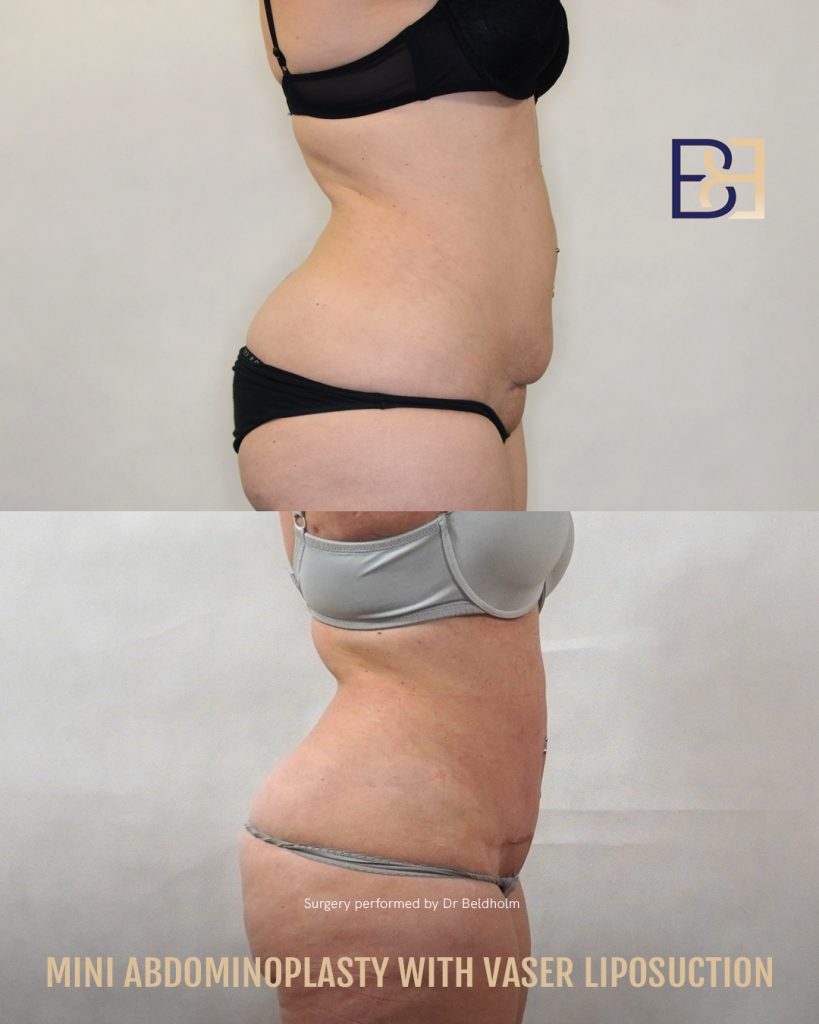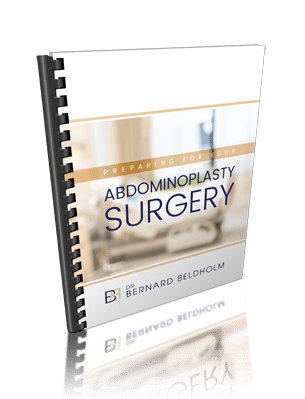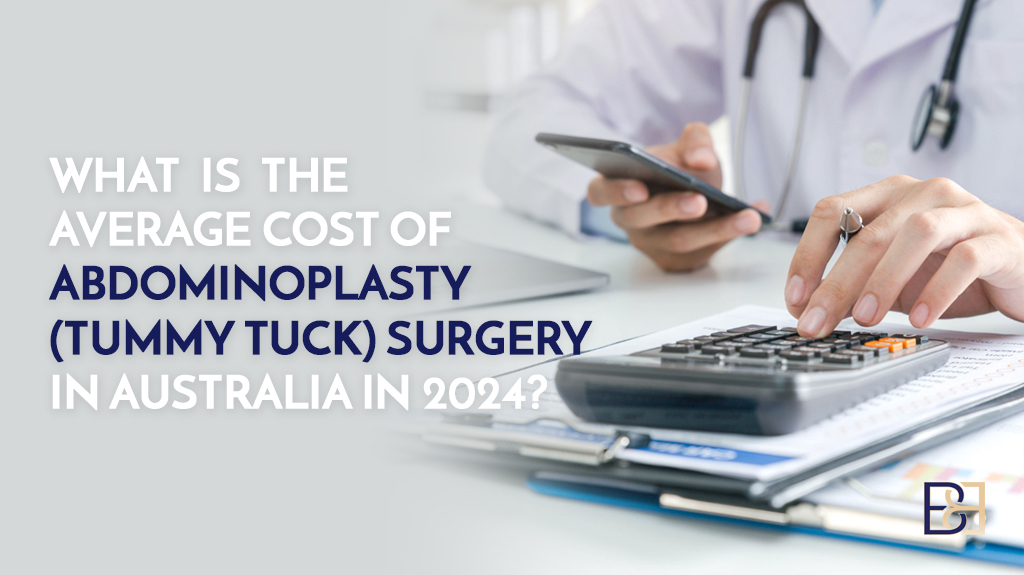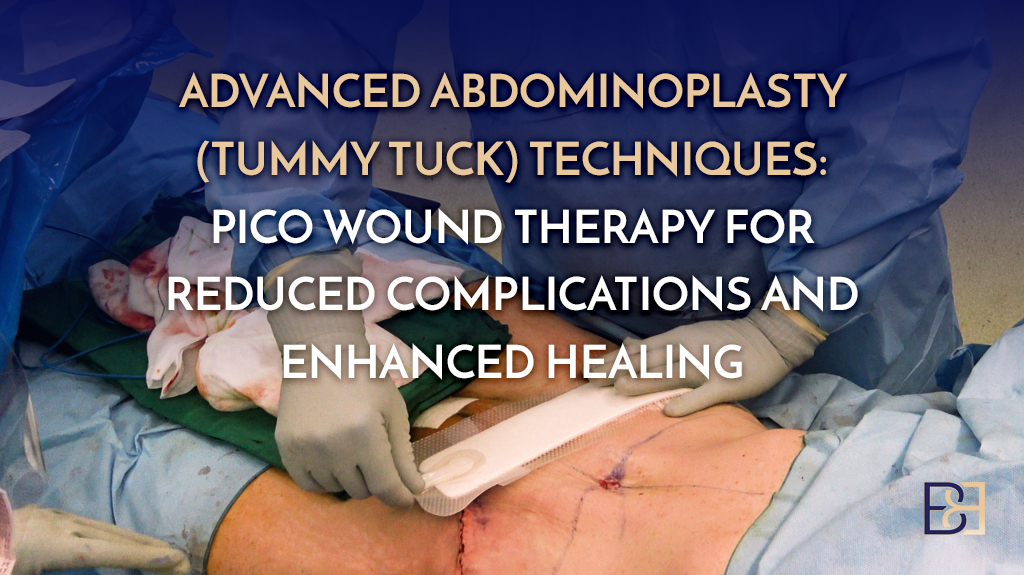There are several reasons why I recommend waiting at least twelve months after pregnancy to undergo traditional abdominoplasty surgery. Not only does your body need time to heal and your loose skin might shrink on its own, but it allows you to spend quality bonding time with your baby and leaves the door open for the possibility of future pregnancies.
In this article, I will explain why I recommend waiting for at least a year after giving birth before considering a major surgery like abdominoplasty. For starters, your body goes through immense pressure during pregnancy, and the best reward you can give it is time to heal. Not only are the abdominal muscles strained for nine months, leaving them weak and vulnerable, but the skin is stretched far beyond its normal capacity and needs time to bounce back. For mums who have undergone a c-section, recovery is even more extensive.

Disclaimer: Operation performed by Dr Bernard Beldholm. Adult content, surgery has risks; individual results vary, seek 2nd opinion. Please see the full disclaimer.
Book your appointment online now
Additionally, new mothers are often sleep-deprived, and for those who are breastfeeding, the body must work overtime to supply the nutrients a growing baby requires. Finally, aside from the physical issues, new motherhood can be emotionally taxing, as newborns deplete every ounce of your energy, attention, and care.
After twelve months, once your body has had time to heal and nature has had time to do its work, if you still feel as though you could benefit from body contouring surgery, I would be happy to meet with you. During a consultation appointment, I will discuss your goals, evaluate your physical condition, and review your concerns in depth.

5 Reasons to Wait 12 Months After Giving Birth Before Undergoing Abdominoplasty Surgery
Nr 1: The Body Needs Time to Heal
The body undergoes a significant amount of strain during pregnancy, especially in the abdominal region. For starters, it takes three to six months just for your uterus to return to its normal size and shape. For those mums who have undergone a C-section, which is considered a major surgery, the experience is even tougher on the body, requiring several months before achieving a full recovery. Regardless of the delivery method, your body needs time to recover.
The body heals the most during the first year after pregnancy, when damaged tissues recover, fluctuating hormones level out, and the skin retracts.
As these crucial healing processes occur, I strongly advise against adding additional strain to your body by undergoing elective surgery. After a year, when your body functions have returned to normal, and you have maintained a healthy lifestyle, we can set up an initial consultation and plan your tummy tuck (abdominoplasty) procedure.
Nr 2: Adjusting to Parenthood Demands Your Full Attention
Being a mother, especially to a newborn, is a full-time job. Immediately after giving birth, you will spend most of the days breastfeeding (if you choose to do so), changing diapers, and getting to know your brand new baby, leaving very little time to even think about anything else, much less a major surgery and the possible complications that could occur.
Furthermore, because of the invasive nature of abdominoplasty, your mobility will be dramatically limited for at least a few weeks. You won’t be able to engage in activities like bending and walking for the first ten days, making it almost impossible to tend to all of your newborn’s demanding needs.
Breastfeeding is considered the best way to feed a newborn, providing the baby with nutrients, antibodies, and skin-to-skin contact. Because of anaesthesia and pain medications, you will not be able to nurse your baby.
Nr 3: Loose Skin May Shrink on Its Own
The body undergoes natural skin tightening after pregnancy, which is why, among other reasons, one might consider a tummy tuck (abdominoplasty) after pregnancy. This natural skin retraction process, which allows the loose skin to shrink, can take about two years, so waiting for at least a year gives your body the time to do on its own the same thing that an invasive, painful surgery would do.
Nr 4: A Weight Loss Journey Awaits You
I also recommend that you reach your goal weight and maintain it for a minimum of six months before your tummy tuck (abdominoplasty). The more stable your weight is, the better the results. You should never consider a tummy tuck (abdominoplasty) as a way to lose weight or as an alternative to a healthy diet and exercise. I perform abdominoplasty to refine your weight loss efforts by getting rid of excess skin and stubborn fat, flattening the abdomen, and tightening muscles after you have lost weight on your own. I never would, nor have I ever, performed a tummy tuck (abdominoplasty) as a weight loss method.
Women’s bodies take an average of one year to regain their shape after pregnancy. I advise new mothers to opt for natural weight loss methods during this time. Activities such as calorie counting and exercise allow you to lose the weight you gained during pregnancy without jumping straight into surgical solutions.
A National Library of Medicine study shows that “[i]t is important to pay attention to weight management before and between pregnancies, as women have an increased risk of weight gain during the reproductive years. Having a baby is a life-changing event for women and the challenge of weight management amidst this period of major physiological, psychological and social change should not be underestimated.”
After putting in the effort for one year, you’ll benefit accordingly when and if you do undergo an abdominoplasty.
Nr 5: Subsequent Pregnancies
While you might feel that you’re finished having children and do not plan to add another baby to the mix, surprises happen and feelings change.
Abdominoplasty is a significant choice that you should consider when you’re certain or aren’t considering having more kids in the near future. Future pregnancies can potentially undo the results of your abdominoplasty surgery, as the abdominal muscles and skin will stretch again to accommodate the growing baby. Waiting ensures the results last as long as possible and are not negatively impacted by subsequent pregnancies.

Disclaimer: Operation performed by Dr Bernard Beldholm. Adult content, surgery has risks; individual results vary, seek 2nd opinion. Please see the full disclaimer.
Types Of Abdominoplasty Surgery to Consider
After twelve months of waiting, you might wonder what will happen next or which abdominoplasty procedure would suit you best. Every successful surgery starts with a consultation. During this session, I will explain in detail the science of abdominoplasty and evaluate you to assess the most suitable procedure for you.
Here are a few options:
Mini Abdominoplasty Surgery

Disclaimer: Operation performed by Dr Bernard Beldholm. Adult content, surgery has risks; individual results vary, seek 2nd opinion. Please see the full disclaimer.
The least invasive abdominoplasty, a mini, involves making a lowly placed incision on the lower abdomen to target excess fat and skin. Mini abdominoplasty is a common choice for many patients because it allows me to make the incision along the bikini line.
A mini abdominoplasty will render you immobile for a day or two. After that, you can slowly resume daily activities, such as caring for your baby and driving.
If you have less skin laxity in your abdomen, you’re the right candidate for a mini abdominoplasty, however, it might not be your best option if you’ve had more than one pregnancy.
Potential complications and risks associated with Mini Abdominoplasty Surgery
Numbness
Swelling
Scarring
Poor wound healing
Discomfort
Belt Lipectomy

The most complex, invasive, and costly of all of the body contouring procedures, a lower body lift (belt lipectomy or circumferential abdominoplasty) is a multi-step operation that tightens loose skin all the way around the waistline.
Using a 360 degree incision, a belt lipectomy treats several body areas at once, leaving the skin on the abdomen, hips, flanks, mons pubis, buttocks, and thighs firmer, tighter, and lifted.
Possible risks associated with a Belt Lipectomy
Seroma
Haematoma
Infection
Numbness
Haemorrhage
Necrosis
Asymmetry
VASER Liposuction

For patients with excess abdominal fat, I recommend including VASER Liposuction (suction-assisted lipectomy), a surgical procedure involving the use of ultrasound waves at high frequencies to dissolve subcutaneous fat cells.
Risks associated with VASER Liposuction
Scarring
Seroma
Swelling
Infection
Haematoma
Nerve damage
Full Or Extended Abdominoplasty (Tummy Tuck)

A full abdominoplasty significant excess skin and fat in your abdomen. I will make a horizontal incision from hip to hip on the lower abdomen. The process also involves upper belly button repositioning.
After your extended abdominoplasty procedure, you will need about ten days to recover full mobility. However, it will take longer before you can resume more strenuous activities such as running and weightlifting. A study by the National Library of Medicine shows that “[t}here is increasing evidence that physical activity (PA) can ** weight loss and other outcomes after bariatric surgery. However, most preoperative patients are insufficiently active and without support, fail to make substantial increases in their PA postoperatively.”
A traditional abdominoplasty is the right option if you’ve undergone significant weight loss and removes excess skin, reposition your belly button, or repair abdominal muscles.
Potential Risks Associated with Full Abdominoplasty Surgery
Scarring
Poor wound healing process
Numbness
Infection
Pain
Fleur-De-Lis Abdominoplasty

Disclaimer: Operation performed by Dr Bernard Beldholm. Adult content, surgery has risks; individual results vary, seek 2nd opinion. Please see the full disclaimer.
Fleur-de-Lis is an option if you’ve had multiple pregnancies and have a significant amount of loose skin. It is a comprehensive abdominoplasty procedure featuring horizontal and vertical incisions. The two incisions allow me to access loose skin and extra fat on both the lower and upper abdomen.
A fleur-de-lis procedure is major surgery, involving a longer recovery time. Not only will it take about a year for the abdominal swelling to disappear, but because of the longer and additional incision, more time is required to heal. I will provide you with customised pre-op and post-surgery guidelines to prepare you for what to expect and how to care for your delicate postoperative abdomen.
Risks and complications associated with FDL Abdominoplasty Surgery
Infection
Haematoma
Seroma
Bad scarring
Skin redundancy
Separated Ab Muscles (Diastasis recti) Without Surgery

After giving birth, your abdominal muscles become weak and vulnerable. Abdomen muscle separation, Diastasis Recti, is expected during the second and sometimes third pregnancy trimesters. The good news is that core exercises are available to help repair these tissues naturally. However, these exercises might not work, especially if you lack the time to work out or suffer from severe muscle separation and excess tissue.
If this is your case, don’t hesitate to book your abdominoplasty procedure. I will repair the separated abdominal muscles to regain your abdominal wall strength, allowing you to continue exercising as you heal.
Is it Ok to Get Pregnant After Abdominoplasty?
As the abdominoplasty procedure doesn’t affect the reproductive organs, it is ok to get pregnant after an abdominoplasty procedure. However, there is a need for close monitoring and the subsequent pregnancy may impact the results of your FDL surgery.
Time Flies with a Newborn
Being a new mother is a rollercoaster; one moment, you’re feeling the joy of holding your baby in your arms, and the next, you are utterly exhausted and sleep-deprived. It is an eventful journey, and you will soon realise how fast time flies by.
After a year, you will notice that your skin laxity and you have achieved a stable weight. This could be the right time to book a consultation so we can plan your abdominoplasty procedure.
FAQs
Use the following commonly asked questions to learn more about the waiting period post-pregnancy for abdominoplasty surgery.
Does Medicare Cover abdominoplasty After A C-Section?
Medicare will cover your procedure if it is deemed medically necessary. Loose abdominal skin after pregnancy can cause significant discomfort. To learn more about the MBS Item Number and which abdominoplasty procedures qualify, schedule a consultation at my office.
For more information, see our blog article, Obtaining Medicare Coverage for Abdominoplasty Surgery in Newcastle, NSW.
Is Abdominoplasty A Major Surgery?
Yes. Abdominoplasty is an invasive surgery, whether you choose a mini, full, or Fleur-De-Lis technique. You must prepare adequately for your procedure and follow the post-surgery guidelines I will provide.
For more information, see our blog article, Is Abdominoplasty Major Surgery?

Dr. Beldholm’s Final Thoughts
Waiting 12 months after pregnancy before undergoing a tummy tuck (abdominoplasty) procedure affords you with the time to think it through. This waiting period allows your body the time it needs to recover fully, for any excess weight gained during pregnancy to stabilise, and for hormonal changes to normalise.
If, after a year, you are still interested in discussing abdominoplasty, I’d love to meet with you for a consultation.
References
1. McKinley MC, Allen-Walker V, McGirr C, Rooney C, Woodside JV. Weight loss after pregnancy: challenges and opportunities. Nutr Res Rev. 2018 Dec;31(2):225-238
2. Winocour J, Gupta V, Ramirez JR, Shack RB, Grotting JC, Higdon KK. Abdominoplasty: Risk Factors, Complication Rates, and Safety of Combined Procedures. Plast Reconstr Surg. 2015 Nov;136(5):597e-606e.
3. Perez BP, Mendez MD. Routine Newborn Care. 2023 July 24. In: StatPearls [Internet]. Treasure Island (FL): StatPearls Publishing; 2024 Jan–. PMID: 30969722.
4. Dexter F, Jarvie C, Epstein RH. Years Versus Days Between Successive Surgeries, After an Initial Outpatient Procedure, for the Median Patient Versus the Median Surgeon in the State of Iowa. Anesth Analg. 2018 Mar;126(3):787-793
5. Sung S, Mahdy H. Cesarean Section. 2023 Jul 9. In: StatPearls [Internet]. Treasure Island (FL): StatPearls Publishing; 2024 Jan–. PMID: 31536313.
6. Bjelica A, Cetkovic N, Trninic-Pjevic A, Mladenovic-Segedi L. The phenomenon of pregnancy – a psychological view. Ginekol Pol. 2018;89(2):102-106.
7. Chan A, Amoroso C, Harris M. New 45-49 year health checks – GP uptake of MBS item 717. Aust Fam Physician. 2008 Sep;37(9):765, 767-8. PMID: 18797535.
8. Flynn J, Choy A, Leavy K, Connolly L, Alards K, Ranasinha S, Tan PY. Negative Pressure Dressings (PICOTM) on Laparotomy Wounds Do Not Reduce Risk of Surgical Site Infection. Surg Infect (Larchmt). 2020 Apr;21(3):231-238





